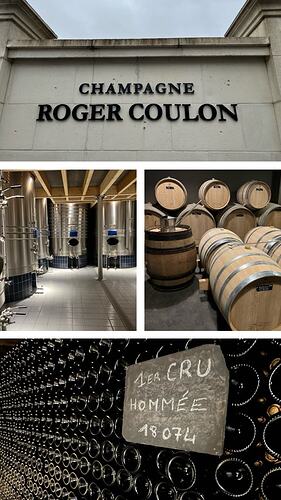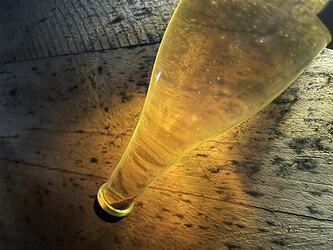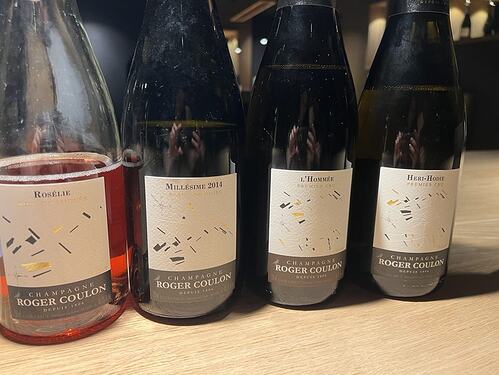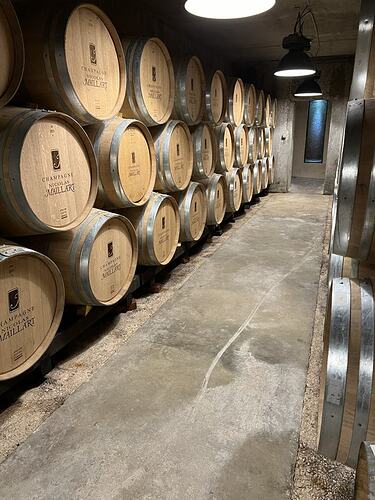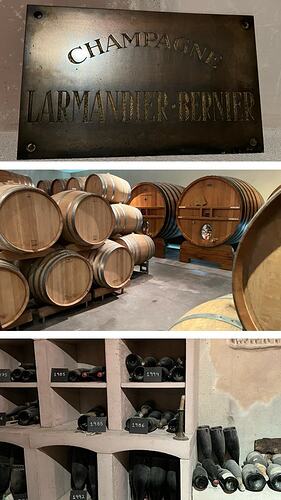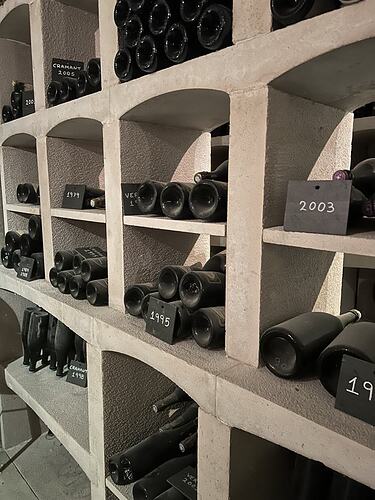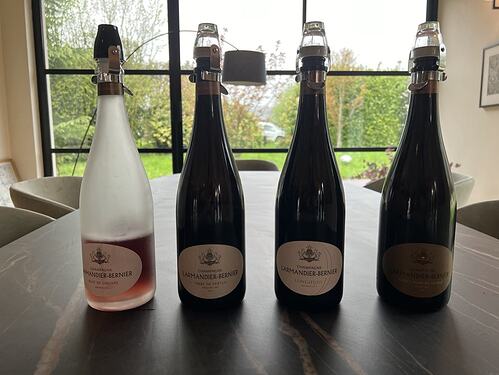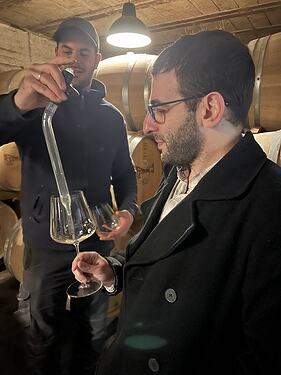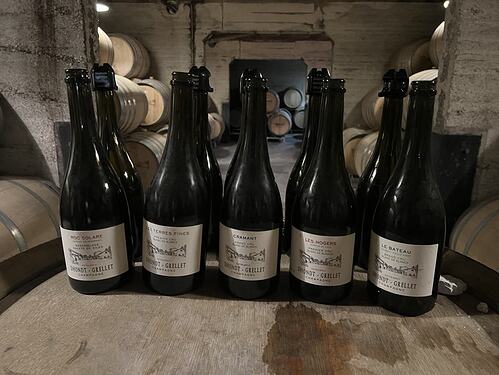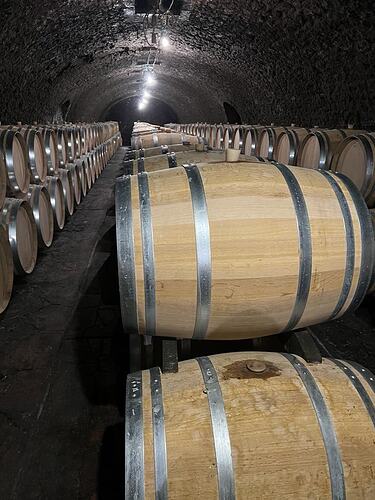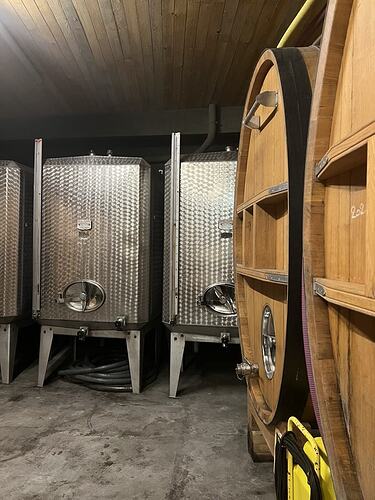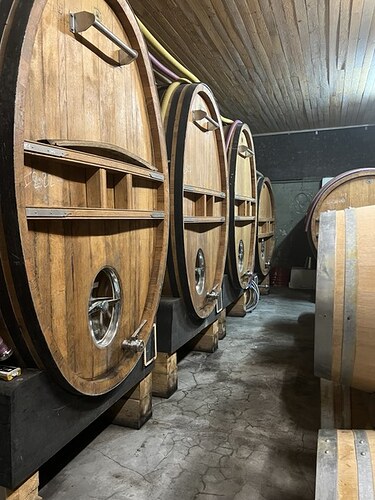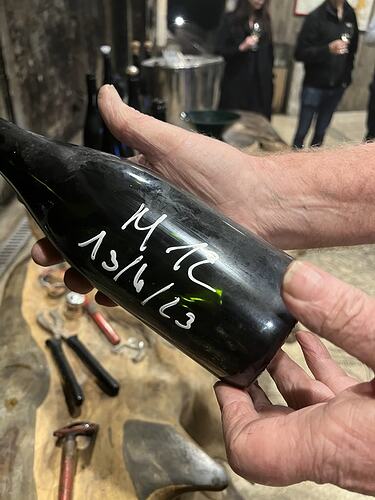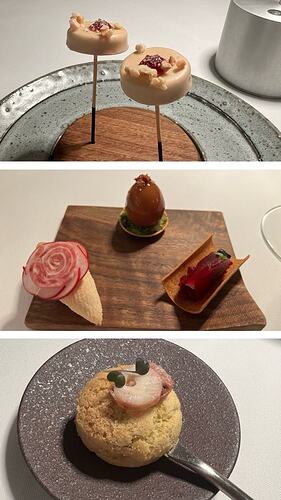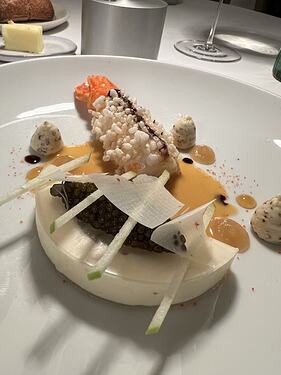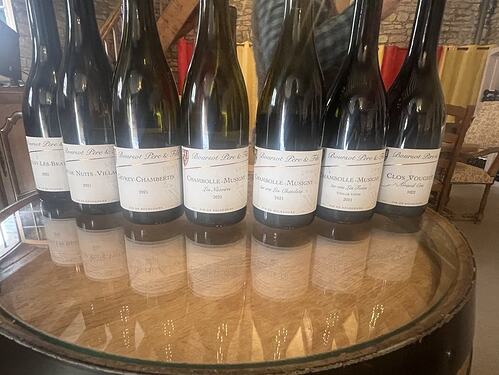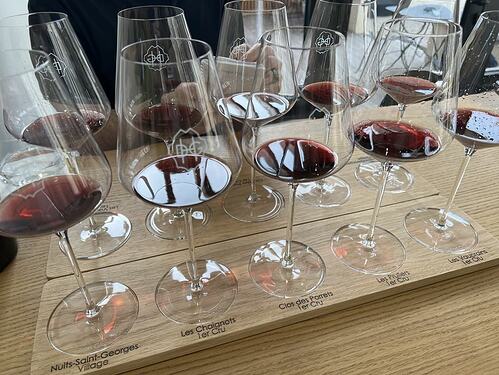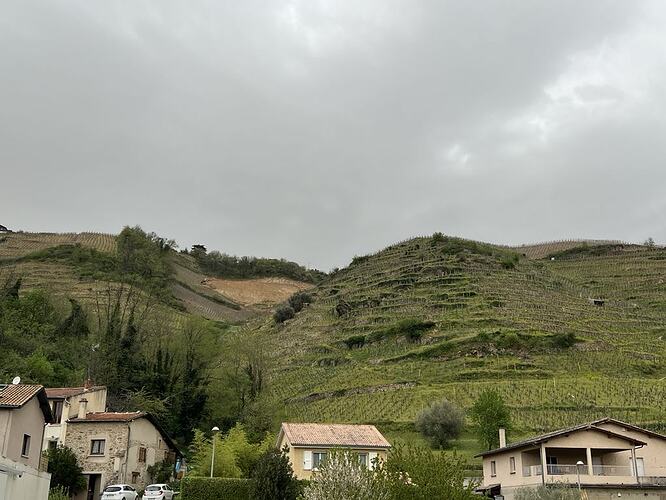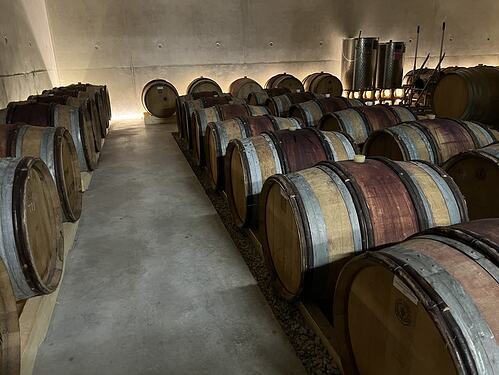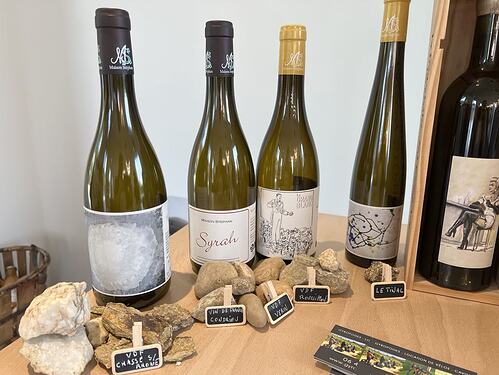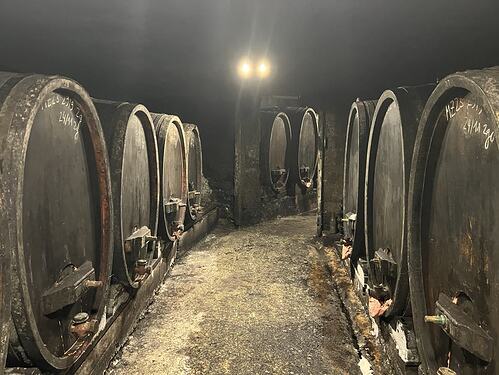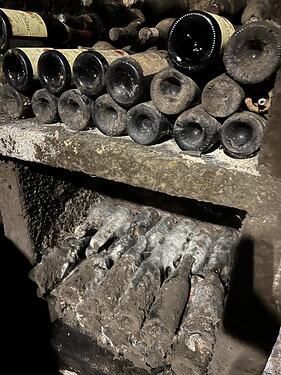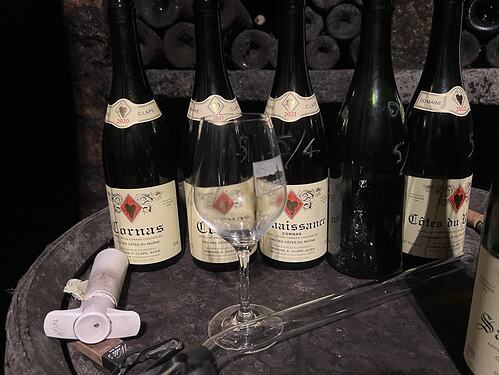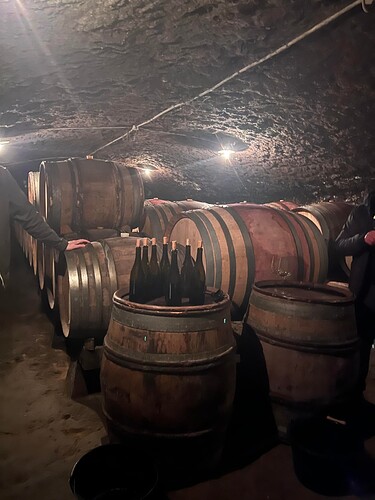I just returned from a wonderful wine-centric trip to France (my first trip to France) and since others’ trip reports were very helpful when planning my trip, I figure I should contribute my own. I’m not going to try to post notes for every wine (although most are on CellarTracker) or share everything I learned, but feel free to ask questions if you want to know anything else.
Since this is a wine forum, I’ll try to focus primarily on wine and wine-related experiences and not as much on food, lodging, etc.
I arranged all of the tastings via email. I wrote them in French (using Google translate) as a courtesy. I found all email addresses either via Google or larvf.com
Please excuse all of the typos!
Day 1 – Arrival to France and Champagne
We didn’t have anything scheduled today in case we were jet lagged. We landed in Paris at 8:15 a.m. rented a car and had a pleasant drive to Reims. I think we checked into our hotel around 11:15 a.m. or so.
First stop was the Glue Pot, a great wine bar. Got some really tasty food and a bottle of NV Emmanuel Brochet Champagne Le Mont Benoit (base 2020) for 120 euros. Really interesting and complex Champagne. I really enjoyed it and found it to be very intellectual, but not something I love enough to buy at home for $200ish/bottle. Recommend stopping here.
We hit up a few wine shops, bakeries, etc. before dinner at La Jardin Les Crayeres. Really nice, relaxing atmosphere, top-notch service (included the somm), and great food, all for a very reasonable price. We enjoyed a bottle of NV Huré Frères Champagne L’Insouciance (base 2020) for 100 euro I think off the great wine list. Great fresh strawberry notes and great balance. Simple, but very enjoyable and something I’ll purchase again. I very highly recommend this restaurant.
Day 2 – Tasting in Champagne (Montagne de Reims)
-
Roger Coulon (Vrigny, Montagne de Reims) – 42 euros/person; 1.5 hours
-
I was already a fan of this small grower-producer, largely because they bottle their Champagne at a lower pressure and because of their commitment to very high quality farming (e.g., organic and agroforestry)
-
Great private tour and tasting with friendly and knowledgeable hostess who spoke great English
-
Some of the information on the tour was pretty basic but we also saw some cool stuff (e.g., clear bottles showing how the lees move as bottles are riddled). The hostess was able to answer more geeky questions
-
We tasted the following cuvees: Heri-Hodie (90% perpetual reserve [started in 1996 if I recall correctly] + 10% 2020), L’Hommée (2018 base), 2014 Blanc de Noirs Brut Millésimé, and Rosélie (2022 base). All wine was very good to excellent.
-
2014 BdN is made from 50% ungrafted Pinot Meunier from Gueux and 50% old vine Pinot Noir from Vrigny. No oak; no malo. Rich but not at all heavy with notes of bread/brioche, spices, light honey; very nicely integrated medium+ acidity; wonderful soft, superfine bubbles. Excellent wine.
-
It would’ve been nice if we got to taste another vintage wine, but this was a great visit and I recommend it.
-
-
Nicolas Maillart (Écueil, Montagne de Reims) – 30 euros/person ; 45 minutes
- The one mistake I made while planning this trip was waiting for Alexandre Chartogne to confirm whether he’d be available when I was in town and then not having any back up plans booked when he let me know he’d be out of town. Maillart was one of the few grower producers in the area who I’ve heard some good stuff about.
- The hostess wasn’t great – she showed no enthusiasm, and not a ton of knowledge beyond the usual spiel (although part of it might be language barrier), so tour wasn’t too great either (understatement)
- Tasting was very lackluster with 2 slightly enjoyable entry level NVs and 1 very good / pretty great 2019 Montchenot. What made this even more disappointing is that they make a lot of seemingly interesting, small production vintage/vineyard-based cuvees, but we only tasted one, so we couldn’t compare sites. Also, the hostess would pour the wine, then leave to an adjacent office where she’s chat/joke with a couple other colleagues and we’d wait a few minutes with empty glasses until she returned to pour more.
- The best thing about this visit was that it was only 45 minutes. I recommend you avoid.
-
We love Reims. So charming and so walkable. Great food, wine bars, etc. and close to a lot of great producers.
Day 3 – Tasting in Champagne (Côte des Blancs)
-
Larmandier-Bernier (Vertus, Côte des Blancs) – 30 euros/person ; about 1.25 hours
-
Probably doesn’t need any introduction, but relatively small, organic grower-producer specializing in BdB Champagne. The only ferment in barrel, but their trying some in amphora
-
Tour and tasting with 10 people total and very knowledgeable hostess who spoke great English. One cool thing we saw on the tour was their stash of old library bottles (vintages going back 40+ years), most of which were still on their lees waiting to be disgorged! I wonder what those wines would be like from aging 40+ years on the lees!
-
We tasted the following cuvees: Rosé de Saignée (2020 base), Longitude (2020 base), 2017 Terre de Vertus, 2014 Vieille Vigne du Levant
-
I didn’t care much for the Rose, but the Longitude was great and a great value and the two vintage wines were really great. My wife preferred the Vertus and I preferred the Levant slightly, which I thought was just a bit richer and more vinous, showed more autolytic and malo notes, and had a bit finer and gentler bubbles. Regardless, I’d be very happy to drink either the Vertus or Levant
-
I recommend this visit
-
-
Dhondt-Grellet (Flavigny, Côte des Blancs) – no fee ; 1.5 hours
-
Adrien Dhondt, only about 33 years old, took over as vigneron of his family’s relatively tiny estate in 2012. Adrien puts a lot of work into farming, primarily using organic and biodynamic practices and plowing his vineyards with his super buff horse, Thor. He tries to promote healthy vines/vineyard ecosystems, but otherwise tries to be largely hands off, especially in the cellar where he largely just lets the wine do what it’s going to do (after all, he already put in so much work in the vineyard). He doesn’t use much sulfur, but he does use it as he recognizes it’s importance in protecting the wine.
-
Adrien speaks great English and is very charismatic and generous
-
We tasted with about 8 people total in his cellar
-
Adrien starts with us tasting maybe 4 or 5 or so vin clairs from 2023, which he said was a difficult vintage, but you couldn’t tell because these wines were great. He could’ve bottled some right then and there and I would’ve bought them. Electric acidity on most, and it’s wild to see how different the different sites show before blending and aging on lees, etc. The vin claires ranged from expressive and fruity to salty and reductive. He loves when his wines are reductive and that seems to be his ideal, but he doesn’t really “do” anything to “make” them reductive, it just depends on the fruit/site and what happens naturally in the cellar.
-
Exemplifying his hands off approach in the cellar:
- I asked if the vin clairs had or are going through malo, he said “I don’t know”, but thought one that was bubbly was probably going through it and thinks most of his wines go through it as he doesn’t stop it
- I asked what pressure he bottles at / if it’s less than 6 bars (it seems like it); he said he’s not sure what it is exactly, but it’s under 6
-
After the vin clairs, we tasted the following cuvees: Roc Solare (2021 base), Les Terres Fines Blanc de Blancs (2020 base), Blanc de Blancs Cramant (2020 base), 2018 Blanc de Blancs Extra Brut Les Nogers, White – Sparkling, 2018, Blanc de Blancs Vieille Vigne Le Bateau, 2015 Le Mont de Fer Rosé de Macération
-
All the wines were great/excellent (I scored most 93 – 94 points, which is high for me). All wines have really great acidity (but still sufficient ripeness) and wonderful pinpoint bubbles. The Roc Solare is actually one of my favorites at this stage with nice complexity and awesome acidity, and is a great value (but so far, he’s only released 5,000 bottles, so you can’t really find them). My other favorites are Les Nogers and Le Bateau, which are more vinous and concentrated, more complex, and have even better (more gentle) bubbles.
-
The 2015 Rose is also very impressive and it still showing very young. Adrien said it’s the only Rose he’s made and will make. I asked if something happened to the fruit source and he essentially said “No, I just don’t like Rose.”
-
Excellent wines and an outstanding visit. I feel like we got really lucky securing a visit here, but if you’re able to visit Adrien, don’t dare pass up the opportunity!
-
-
Jacques Selosse (Avize, Côte des Blancs) – 50 euros/person (most of which is for a translator) ; 2.75 hours
-
(Doesn’t need an intro, but still) Small, cult grower-producer who many will say is the best grower-producer in Champagne and probably the most influential grower-producer in Champagne. They practice permaculture and a relatively hands off approach in the cellar. They are known for their oxidative wines, and their use of a Solera in Champagne.
-
Anselme hosted a group of maybe 15 people (all guests at his hotel, Les Avises) in the Selosse cellar. He doesn’t really speak English, so he had an English translator with him.
-
The first 80% or so of the visit/tasting was a pretty freeform Q&A / discussion with Anselme (with the help of the translator), who clearly is a passionate genius. His thoughts on wine are like poetry. The one other winemaker I’ve met who gave me pretty similar vibes is Ketan Mody.
-
He doesn’t think he has a “best” wine. They are just different. He likes a hands off approach and to just guide the wine so it can best express the time and place
-
They don’t typically add sulfur until they’re bottling, but they watch how the wine “breathes” as it ferments in barrels and will add just a touch of sulfur to protect the wine if they think it’s needed
-
Selosse tries to avoid spraying the vineyards if at all possible and instead tries to promote healthy vines and vineyard ecosystems. For example, he’ll spread frozen, ground-up algae in the vineyard to introduce something foreign to the vines to help them build immunity/resilience
-
I asked him what he thinks on aging’s (post disgorgement) effect on the wine’s ability to clearly and authentically express terroir and he (1) lit some paper on fire to demonstrate how oxygen causes beautiful reactions and changes the wine over time, but ultimately leaves behind only [inorganic] ash (his wines are mortal) and (2) said that as wine ages, the effect of vintage is removed from the wine and you are eventually left with pretty much only an expression of terroir. He said it’s kind of like how a child is influenced so much by the year and decade he or she was born when he or she is young, but after several decades, the child more reflects their experience in the environment(s) in which they matured more than the time at which they were born. (he said it much more beautifully than I am summarizing [and I didn’t take notes at the time])
-
Comité Champagne (I think) recently declared/required pick dates that Anselme deemed too early, so he essentially ignored them. They also told growers to add nitrogen (I think) to the soil, but Anselme didn’t think this was good for his vines, so he ignored them. Not listening to the comitie’s requirements usually just results in a slap on the wrist if anything, though it seems that one might not be able to label their wine “Champagne” if it doesn’t comply with the committee’s mandates (I have trouble remembering the details of this part) and in connection with this discussion, Anselme said legally, the 1988 vintage doesn’t exist
 . More realistically, if they think a grower needs to be reined in, they’ll send someone to “supervise” him, and we laughed at the thought of someone supervising Anselme making/growing Champagne.
. More realistically, if they think a grower needs to be reined in, they’ll send someone to “supervise” him, and we laughed at the thought of someone supervising Anselme making/growing Champagne.
-
We taste the following cuvees: (2017 base, disg. 23), VO (2017 base, disg. 23), Rose (2017 base, disg. right in front of us), Substance (disg. 2018), and Millésimé 2012 (I think only the 4th bottle he’s opened for anyone). All of the wines were incredible (so amazingly complex, rich, vinous, excellent bubbles, etc.) and the 2012 was by far the best Champagne I’ve ever had (and I made sure to really savor it as there were only 3,200 bottles produced). I had recently asked about the bubbles/pressure and when I tasted the 2012, Anselme looks at me, smiles, and asks “where are the bubbles?” seemingly proud of the immaculately gentle pinpoint mousse on this wine.
-
(I have a video of him disgorging a bottle of Rose by hand, but don’t know how to post it here)
- A simply incredible experience.
We ate dinner steps away from Selosse’s cellar in Les Avises.
- Great 3 course meal. Kind of like more laidback fine dining
- Prices of Selosse at the restaurant are much lower than retail (in USA at least)
- Highly recommended
Unless you’re trying to save money, I highly recommend staying in the Les Avises Hotel (even if you don’t get a chance to taste with Anselme) if you’re visiting the Côte des Blancs.
This concludes the Champagne portion of our trip. I was a bit worried about having to taste “bad” vintages, but I didn’t notice any of the wines seemingly suffering from bad/challenging vintage conditions.
I posted about the Burgundy portion of our trip in post no. 14 and posted about the Rhone portion of the trip in post no. 16.
